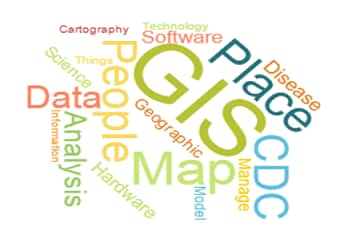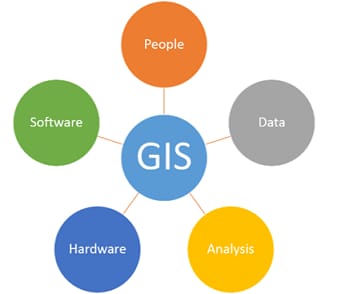What is GIS?

GIS, or geographic information systems, are computer-based tools used to store, visualize, analyze, and interpret geographic data. Geographic data (also called spatial, or geospatial data) identifies the geographic location of features.
These data include anything that can be associated with a location on the globe, or more simply anything that can be mapped. For example, roads, country boundaries, and address are all types of spatial data. At the CDC, we use GIS to help answer questions about how location impacts disease and disability.
Pieces of GIS
People: People use GIS to answer specific data-related questions. People collect data, develop procedures, identify research questions and define analysis tasks to run in GIS. In public health, people use GIS to explore a variety of topics. For example, researchers at CDC have used GIS to identify how to target polio immunization campaigns in geographically isolated locations.

Data: There are two main GIS types: vector data and raster data.
– Vector data includes spatial features (points, lines, and polygons) and attributes about that data (descriptive information).
– Raster data are stored electronic images (e.g., pictures taken as an aerial photograph or satellite images).
Analysis is the process of using spatial data to answer questions. There are many different analysis techniques.
Hardware: GIS software is run on computers. Memory and computing power are important because spatial data includes many attributes making it very large.
Software: Geographic Information Systems require specialized software. The most commonly used GIS software at CDC/ATSDR include ArcGIS and QGIS. These types of programs can be used in conjunction with other types of software such as databases, statistical packages, or programming languages to increase functionality.